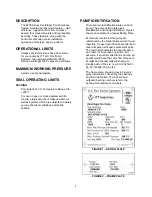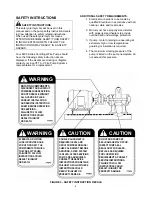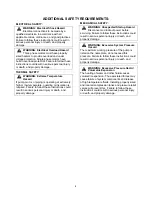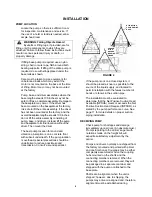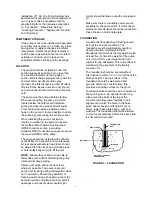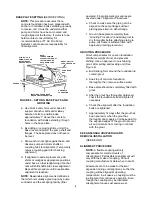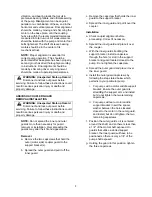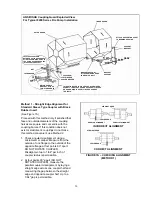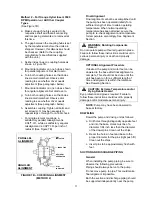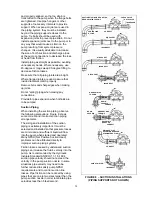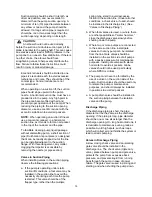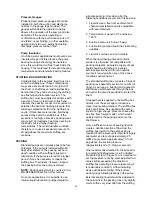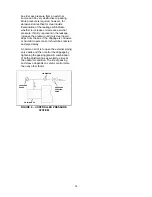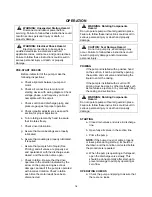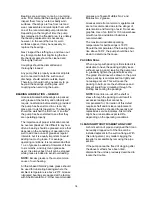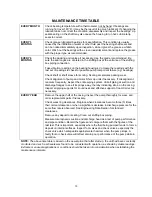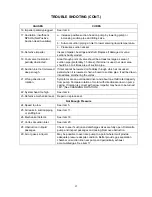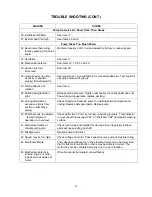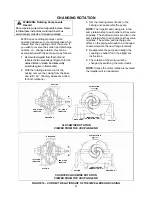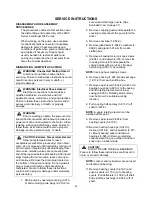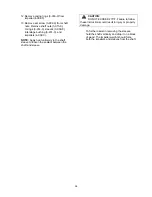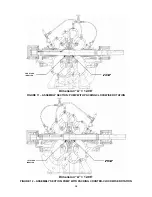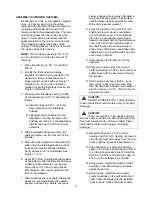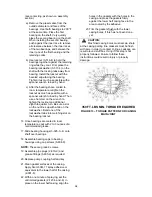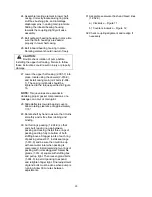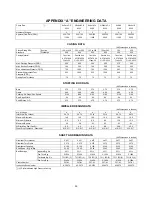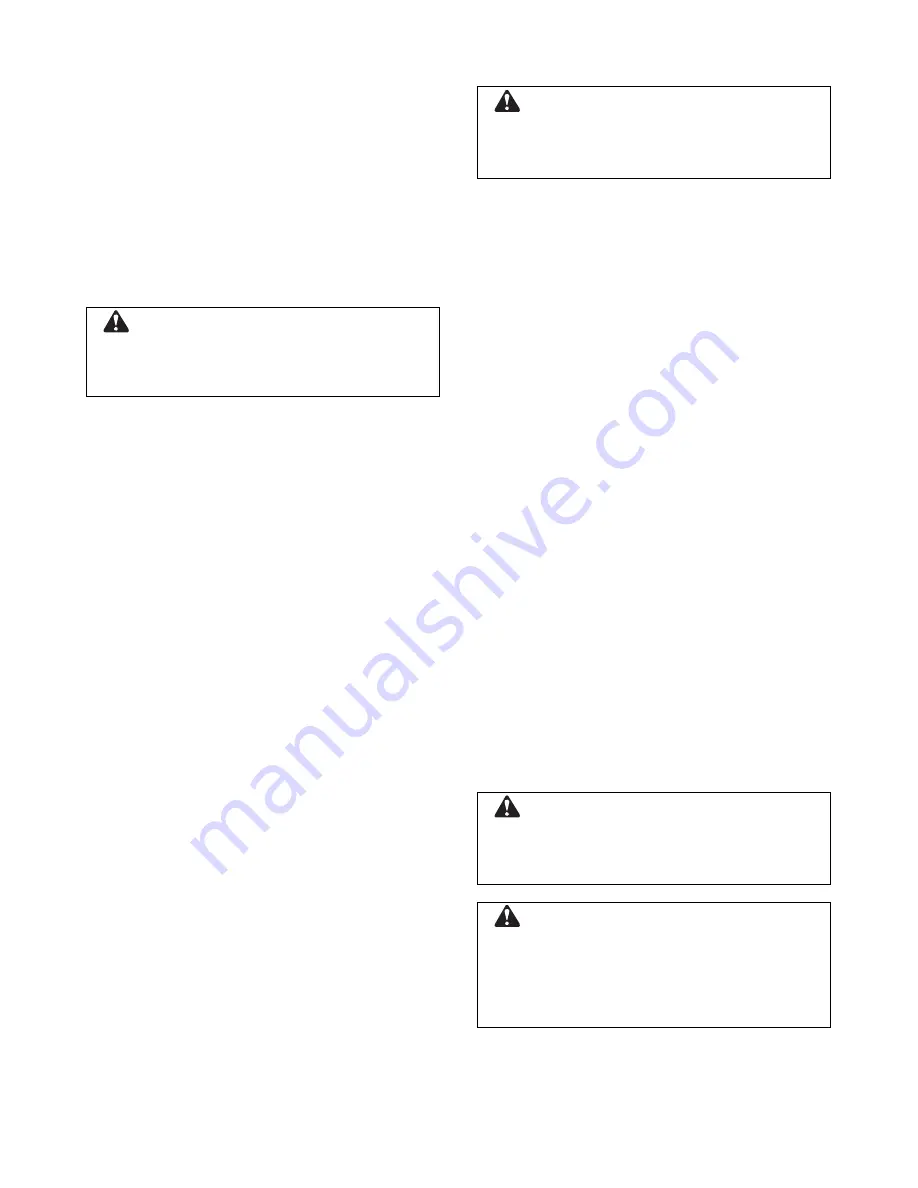
17
b. Check and record pressure gauge
readings for future reference.
c. Check and record voltage, amperage per
phase, and kw if an indicating wattmeter is
available.
d. Check bearings for lubrication and
temperature. Normal temperature is 180°
maximum.
e. Make all pump output adjustments with
the discharge line.
CAUTION: Cavitation Damage Hazard
Do not throttle the suction line to adjust the
pump output. Failure to follow these instructions
could result in property damage and/or moderate
personal injury.
FREEZING PROTECTION
Pumps that are shut down during freezing
conditions should be protected by one of the
following methods.
a. Drain the pump; remove all liquids from
the casing.
b. Keep fluid moving in the pump and
insulate or heat the pump to prevent
freezing.
CAUTION: Bearing/Seal Damage Hazard
Do not let heated pump temperature rise
above 150°F. Failure to follow these instructions
could result in property damage and/or moderate
personal injury.
FIELD TESTING
A typical performance curve for a specific
pump can be obtained from ITT A-C Fire
Pump Systems. This can be used in
conjunction with a field test, if one is required.
All ITT A-C Fire Pump Systems tests and
curves are based on the
Hydraulic Institute
Standards
. Any field test must be conducted
according to these Standards.
Unless otherwise specifically agreed, all
capacity, head, and efficiencies are based on
shop tests when handling clear, cold, fresh
water at a temperature not over 85°F.
Appendix “C” (Pages 34-35) contains a field
test report sheet and some useful equations
which can be used when conducting a field
test.
MAINTENANCE
GENERAL MAINTENANCE
Operating conditions vary so widely that to
recommend one schedule of preventative
maintenance for all centrifugal pumps is not
possible. Yet some sort of regular inspection
must be planned and followed. We suggest a
permanent record be kept of the periodic
inspections and maintenance performed on
your pump. This recognition of maintenance
procedure will keep your pump in good
working condition, and prevent costly
breakdown.
One of the best rules to follow in the proper
maintenance of your centrifugal pump is to
keep a record of actual operating hours.
Then, after a predetermined period of
operation has elapsed, the pump should be
given a thorough inspection. The length of
this operating period will vary with different
applications, and can only be determined
from experience. New equipment, however,
should be examined after a relatively short
period of operation. The next inspection
period can be lengthened somewhat. This
system can be followed until a maximum
period of operation is reached which should
be considered the operating schedule
between inspections.
MAINTENANCE OF PUMP DUE TO FLOOD
DAMAGE
WARNING: Unexpected Startup Hazard
Disconnect and lockout power before
servicing. Failure to follow these instructions could
result in serious personal injury or death, or
property damage.
WARNING: Electrical Shock Hazard
Electrical connections to be made by a
qualified electrician in accordance will all
applicable codes, ordinances, and good practices.
Failure to follow these instructions could result in
serious personal injury or death, or property
damage.
The servicing of centrifugal pumps after a
flooded condition is a comparatively simple
matter under normal conditions.

